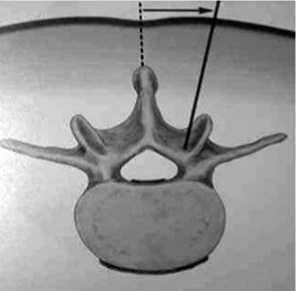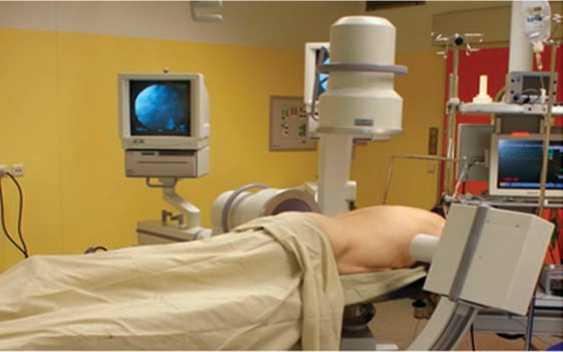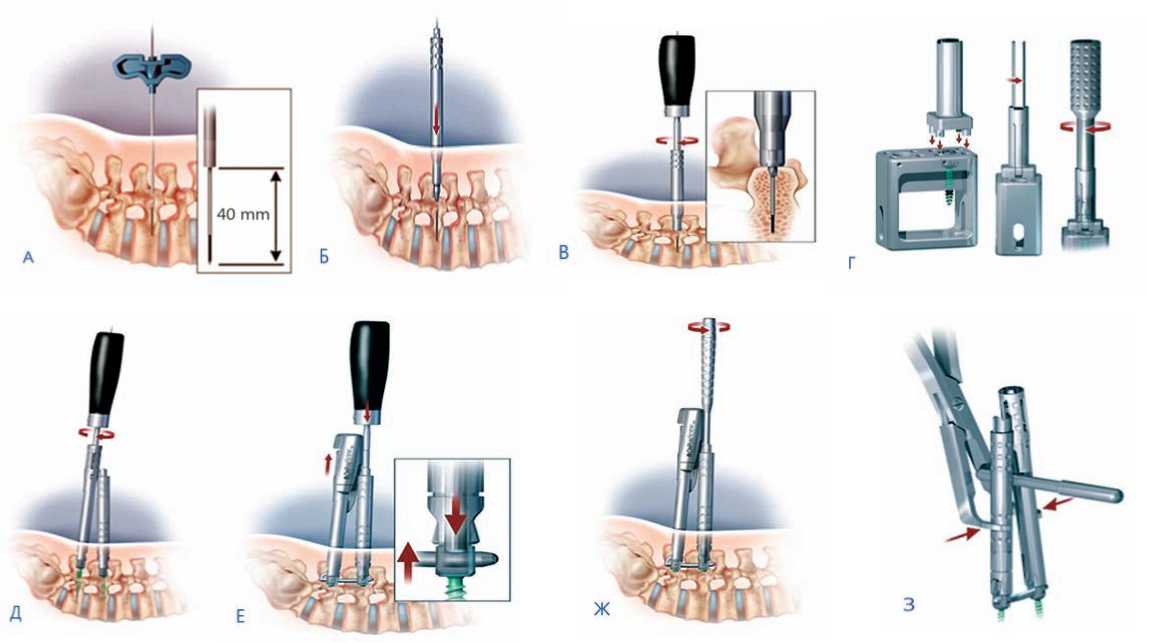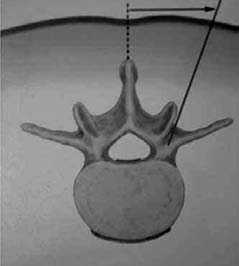Применение малоинвазивных технологий в задней стабилизации поясничного отдела позвоночника при дегенеративно-дистрофических заболеваниях (методические рекомендации)
Автор: Кавалерский Г.М., Слиняков Л.Ю., Ченский А.Д.
Журнал: Кафедра травматологии и ортопедии @jkto
Рубрика: Методические рекомендации
Статья в выпуске: 4 (4), 2012 года.
Бесплатный доступ
Одной из наиболее частых причин вертеброгенных дорсалгий являются дегенеративно-дистрофические заболевания пояснично-крестцового отдела позвоночника. В настоящее время отмечается неуклонный рост оперативных вмешательств по поводу дегенеративных заболеваний позвоночника и их осложнений, среди которых задний доступ к поясничному отделу позвоночника является основным и самым распространенным, однако частота неудовлетворительных исходов после применения этого доступа остается на высоком уровне. Применение малоинвазивных способов задней стабилизации поясничного отдела позвоночника при его дегенеративном поражении является эффективным методом хирургического лечения, является биомеханически и патофизиологически обоснованным, позволяет проводить раннюю активную реабилитацию за счет минимальной травматизации паравертебральных мышц и не оказывает отрицательного влияния на качество установки металлофиксатора.
Дегенеративно-дистрофические заболевания пояснично-крестцового отдела позвоночника, задняя стабилизация поясничного отдела позвоночник
Короткий адрес: https://sciup.org/142211335
IDR: 142211335
Текст научной статьи Применение малоинвазивных технологий в задней стабилизации поясничного отдела позвоночника при дегенеративно-дистрофических заболеваниях (методические рекомендации)
Боль в нижней части спины является второй по частоте причиной обращения в медицинские учреждения за помощью после респираторных заболеваний и третьей причиной по госпитализации. Около 10% взрослого населения страдает хроническими болями в спине, на лечение которых уходит до 3-х месяцев ежегодно. 90% страдающих хроническим болевым синдромом являются людьми трудоспособного возраста — от 30 до 55 лет. Одной из наиболее частых причин вертеброгенных дорсалгий являются дегенеративно-дистрофические заболевания пояснично-крестцового отдела позвоночника, к которым относятся: остеохондроз, спондилез, спондилоартроз, дегенеративный спондилолистез, дегенеративный стеноз позвоночного канала. Проявления симптомов данной группы заболеваний варьируют от локального болевого синдрома до клинической картины неврологических нарушений, связанных с развитием компрессии спинномозговых корешков и сосудов вследствие развития грыж межпозвонковых дисков, нестабильности пораженных сегментов.
Оперативное вмешательство из заднего доступа в настоящее время является основным и самым распространенным методом хирургического лечения грыж поясничных межпозвонковых дисков. Двумя основными направлениями в оперативном лечении дегенеративных заболеваний являются использование транспедикулярной фиксации ригидными или динамическими фиксаторами и использование межостистых фиксаторов. Оценивая результаты оперативного лечения с применением транспедикулярных фиксаторов, следует признать, что количество неудовлетворительных результатов остается достаточно высоким, достигая 25%. Одной из причин сохраняющегося после операции стойкого болевого син- дрома в поясничной области является травматичность задних доступов, обусловленная массивным скелетированием дужек и суставных отростков и длительной тракцией мышечнофасциального комплекса. Стремление устранить этот недостаток привело к появлению малоинвазивной методики стабилизации поясничного отдела позвоночника.
Нами отработаны минимально инвазивные методы стабилизации поясничного отдела позвоночника при различных дегенеративно-дистрофических заболеваниях. На основе клинических данных и данных инструментального обследования определены показания и противопоказания к использованию различных типов малоинвазивных стабилизирующих пособий.
Показания к применению метода
Показанием к применению транспедикулярной фиксации является нестабильность позвоночно-двигательного сегмента. С практической точки зрения наибольший интерес представляет классификация дегенеративной нестабильности поясничного отдела позвоночника, предложенная Макировым С.К. с соавторами (2006) по результатам математического моделирования. Автор выделяет 3 типа нестабильности в позвоночнодвигательном сегменте:
Дислокационный синдром 1 типа – характерно снижение высоты межтелового промежутка (т.е. межпозвонкового диска) от 10 до 30%; в этом случае в дугоотростчатых суставах наблюдается незначительных «подвывих» («функциональный блок»).
Дислокационный синдром 2 типа (истинная нестабильность) – отмечается снижение высоты межтелового пространства от 31 до 50%; возможно развитие динамического стеноза позвоночного канала даже при отсутствии стенозирующих факторов (грыжа диска, гипертрофия связочного аппарата, остеофиты). Этот тип делится на два подтипа:
2А тип – стенозирующие факторы располагаются в передней части спинномозгового канала
2Б тип – стеноз исходит из боковых и задних отделов канала.
Дислокационный синдром 3 типа – снижение высоты межтелового промежутка более 50%; данная степень дегенерации межпозвонкового диска ведет к развитию спондилоартроза, нарушению подвижности в фасеточных суставах и создает условия для развития фиброзного блока в межтеловом пространстве с дальнейшей дегенерацией костной ткани (прогрессирование спондилеза).
Таким образом, применение различных транспедикулярных систем должно быть обосновано типом развившейся нестабильности, то есть стадией патологического процесса в позвоночно-двигательном сегменте.
При дислокационном синдроме 1-го типа возможно применение динамических транспедикулярных систем (nonfusion technologies), в частности межостистых фиксаторов (Coflex, Diam). При дислокационном синдроме 2 и 3 типов показано применение ригидных транспедикулярных систем.
К малоинвазивным методикам задней стабилизации поясничного отдела позвоночника, активно применяющимся в настоящее время, относятся:
Чрескожная билатеральная транспедикулярная фиксация в сочетании со спондилодезом кейджем (или аутокостью) из мини-доступа (miPLIF) – спондилодез 360°; показаниями к применению данного типа стабилизации мы считаем дислокационный синдром 2 и 3 типов по классификации Макирова С.К. [30] в сочетании со срединной или парамедианной грыжей диска без признаков секвестрации или при наличии таковых без миграции секвестра или с миграцией в пределах половины тел позвонков, участвующих в формировании позвоночнодвигательного сегмента.
Унилатеральная транспедикулярная фиксацая в сочетании со спондилодезом кейджем из мини-доступа или без такового (miTLIF) – спондилодез 270°; показанием к применению данного типа стабилизации мы считаем дислокационный синдром 2 типа при наличии стеноза латеральных отделов позвоночного канала и фораминального канала за счет латеральной грыжи диска, гипертрофии элементов фасеточных суставов.
Билатеральная чрескожная транспедикулярная фиксация. Показанием для данного типа стабилизации, по нашему мнению, является дислокационный синдром 2А типа в сочетании с центральным стенозом позвоночного канала. Данное пособие может выполняться и как этап 2-этапного лечения перед проведением переднего спондилодеза, и как окончательный способ лечения у пациентов с тяжелыми сопутствующими соматическими заболеваниями.
Противопоказани к применению метода
— Остеопороз тел позвонков (T-критерий по данным денситометрии менее -2.5 SD).
— Деструкция тел позвонков вследствие онкологического процесса.
— Наличие миграции секвестра грыжи межпозвонкового диска более чем на половину высоты тела позвонков, составляющих позвоночно-двигательный сегмент.
— Сочетанный (центральный и фораминальный) моносег-ментарный стеноз позвоночного канала (относительное противопоказание).
Материально-техническое обеспечение
— Набор общехирургических и нейрохирургических инструментов, необходимых для выполнения декомпрессии позвоночного канала.
— Электронно-оптический преобразователь (ЭОП).
— Набор канюлированных инструментов для чрескожной установки транспедикулярных фиксаторов.
Описание метода
Чрескожная билатеральная транспедикулярная фиксация в сочетании со спондилодезом кейджем (или аутокостью) из мини-доступа
После укладки пациента на живот или в коленно-локтевое положение производится маркировка межостистого проме-

Рис. 1. Траектория доступа для декомпрессии центральных отделов позвоночного канала при проведении билатеральной малоинвазивной транспедикулярной фиксации (из Lewandowski K.U. et al.)
жутка инъекционной иглой, немного отступив от линии предполагаемого разреза кожи. Проводится контроль положения иглы электронно-оптическим преобразователем (далее – ЭОП). Осуществляется разрез кожи и подкожно-жировой клетчатки длиной 2–3 см.
Далее, дугообразно отступив от линии остистых отростков, рассекается грудопоясничная фасция. Для облегчения послойного ушивания раны фасция прошивается и отводится на держалках латерально. Далее тупо отслаиваются от остистого отростка паравертебральные мышцы не более чем на 3 см (рис. 1). Использование такой техники позволяет сохранить собственный фасциальный футляр мышц и осуществить отведение мышцы бескровно, а также предотвращает развитие грубого рубца и сохраняет работоспособность мышц.
После отведения мышц визуализируется междужковый промежуток, основание остистого отростка и медиальный край фасеточного сустава. Проводится интраоперационный тест на нестабильность позвоночно-двигательного сегмента путем захвата остистого отростка вышележащего позвонка зажимом и попытки его смещения в переднезаднем и боковых направлениях. Проводится рассечение и удаление желтой связки (флавэктомия) с использованием «пистолетных» кусачек Керрисо-на. При рассечении желтой связки имеется риск повреждения твердой мозговой оболочки, которая может быть интимно спаяна с внутренним листком желтой связки вследствие развития рубцово-спаечного процесса в эпидуральном пространстве. Поэтому следует производить рассечение желтой связки параллельно дужке у основания остистого отростка, где располагается наиболее широкая часть позвоночного канала. Желтую связку иссекают от основания остистого отростка до фасеточного сустава. Неполноценная резекция желтой связки, как правило, приводит к развитию рубцового процесса. Резекция желтой связки завершает выполнение транслигаментозного доступа.
Как правило, транслигаментозный доступ связан с техническими сложностями, и приходится проводить расширение доступа путем частичной резекцией дужек (аркотомия), то есть осуществлять интерламинарный доступ. При наличии признаков стеноза латерального канала следует проводить медиальную фасетэктомию.
Далее проводится мобилизация спинномозгового корешка и дурального мешка в медиальном направлении (менингора-

Рис. 2. Схема расположения электронно-оптических преобразователей при биплоскостном мониторировании (до начала операции)
дикулолиз). Проводится ревизия межпозвоночного диска, удаление грыжи диска, дискэктомия. Спинномозговой корешок визуализируется на протяжении.
При укорочении и утолщении дужки позвонка, обуславливающих стеноз латеральных отделов позвоночного канала, проводится гемиламинэктомия с сохранением остистого отростка.
Следующим этапом оперативного пособия является установка транспедикулярного фиксатора. Нами методика разрабатывалась с использованием оригинального набора канюлированных инструментов Viper (DePuy Spine).
Под ЭОП-контролем чрескожно билатерально (или из мини-доступа и чрескожно контрлатерально) транспедикулярно проводится заведение иглы-троакара в тела позвонков. Нами настоятельно рекомендуется применять биплоскостное ЭОП-мониторирование (рис. 2). Данная методика позволяет значительно сократить продолжительность стабилизирующего этапа операции. Использование двух фиксированных источников рентгеновского излучения позволяет выполнять снимки в идентичных проекциях без потери центрации. Таким образом, коррекция троакара проводится намного быстрее, снижая травматизацию паравертебральных мышц.
После установки троакара в необходимом положении и извлечения стилета заводится спица с винтовой нарезкой на конце, плотно фиксирующаяся в теле позвонка (рис. 3А). Спица-направитель имеет горизонтальные метки, обозначающие глубину заведения в тело позвонка, что не требует дополнительного использования рентгенологического контроля. Троакар удаляется. По спице-направителю производят эксцентричное разведение кожи, фасции и паравертебральных мышц путем применения тубулярных мышечных ретракторов, увеличивающихся в диаметре (рис. 3Б). Используя канюлированное шило и метчик, подготавливают канал в ножке и теле позвонка для заведения винтов (рис. 3В). На специальном адаптере с использованием направителей (закрытого и открытого типа различной длины) производят сборку системы «винт – проводник – отвертка» (рис. 3Г). В наборе инструментов имеются закрытые и открытые, большие и малые проводники с возможной

Рис. 3. Набор инструментов Viper и различные этапы установки транспедикулярной системы Expedium LIS
глубиной установки от 30 до 100 мм, что особенно важно при проведении операции у пациентов с чрезмерным развитием подкожно-жирового слоя. После сборки комплекса «винт – проводник – отвертка» под динамическим ЭОП-контролем по направляющей спице производят установку винта в тело позвонка. Производят аналогичную процедуру уровнем ниже (рис. 3Д).
После установки двух винтов следует провести рентгенологический контроль в боковой проекции — головки винтов должны располагаться на одном уровне. Отверстия в проводниках так же устанавливаются на одном уровне. Предизогнутый стержень фиксируют в держателе, ориентируясь на специальные метки, добиваясь их сопоставления. Производят установку стержня через проводники (рис. 3Е). После корректной установки стержня производят его фиксацию однокомпонентной гайкой с помощью отвертки-инсертера (рис. 3Ж). Блокирование гайки не проводят. Отсоединяют держатель от стержня. Фиксируют стержень второй гайкой. С помощью Т-образной планки и компрессора возможно проведение как дистракции, так и компрессии (рис. 3З). Завершающим моментом является блокирование гайки в головки винта с помощью финальной отвертки и динамометрического ключа.
После восстановления высоты межтелового промежутка путем дистракции выполненяется спондилодез аутокостью или кейджем, далее дается компрессия.
Проводится послойное ушивание центральной раны с оставлением трубчатого дренажа, устанавливаемого под пара-

Рис. 4. Траектория операционного доступа при проведении унилатеральной декомпрессии латерального кармана позвоночного канала (из Lewandowski K.U. et al. [93, 98])
вертебральные мышцы. В области проведения винтов проводится ушивание только кожи.
Билатеральная чрескожная транспедикулярная фиксация
Техника данной операции аналогична вышеизложенной.
Из срединного мини-доступа выполняется флавэктомия, резекционная щадящая ламинэктомия (без резекции суставных отростков). Объем декомпрессии обуславливается отсутствием признаков стенозирования латеральных карманов на уровне поражения. После декомпрессии проводится ревизия позвоночного канала, в том числе и латеральных карманов. При выявлении рубцово-спаечного процесса (эпидуральный фиброз) проводится менингорадикулолиз.
По завершению декомпрессии проводится билатеральная чрескожная транспедикулярная фиксация с использованием инструментария Viper по вышеописанной методике.
Специальной редукции тела позвонка, находящегося в ли-стезе, как правило, не требуется.
Унилатеральная транспедикулярная фиксация
Операционный доступ осуществляется после предварительной разметки, отступив на 4,0–4,5 см от линии остистых отростков в проекции фасеточного сустава (рис. 4). Послойно производится рассечение кожи, подкожной жировой клетчатки, грудопоясничной фасции. В дальнейшем применяются тубулярные мышечные ретракторы.
После разведения паравертебральных мышц устанавливается либо S-образный крючок за латеральных суставной отросток, либо оригинальные ретракторные системы. Преимуществами подобного инструментального сопровождения следует считать: возможность фиксации достигнутой ретракции, равномерное воздействие (давление крючков) на паравертебральный мышечно-фасциальный комплекс во взаимно перпендикулярных плоскостях, а также возможность комплексного использования осветительной системы и микроскопа (или эндоскопического оборудования) за счет жесткой фиксации их к ретрактору.
Следующим этапом осуществляется декомпрессия латерального канала путем частичной или полной фасетэктомии, флавэктомии. Визуализируется спинномозговой корешок как в латеральном канале, так и на протяжении в фораминальном канале, определяется зона компримирующего воздействия. Производится мобилизация корешка и его ревизия на протяжении. Следует проводить тщательную оценку состояния ин-трафораминального связочного аппарата. Следующим этапом производится удаление грыжи диска, дискэктомия, в межтеловой промежуток вводится кейдж с аутокостью соответствующего размера.
Установка транспедикулярного фиксатора не имеет особенностей. Однако применение специально разработанного инструментария значительно облегчает установку металлофикса-тора, сокращает время процедуры и лучевую нагрузку (время работы электронно-оптического преобразователя).
Ведение в послеоперационном периоде
В послеоперационном периоде всем пациентам, вне зависимости от проведенной операции, необходимо проведение анальгетической и антибактериальной терапия; пациентам с проявлениями радикулярной симптоматики (нарушения чувствительности, болевой синдром) проводится комплексная терапия, включающая противовоспалительную, сосудистую, противоотечную и нейротропную.
Интенсивность ранней активизации напрямую зависит от объема оперативного вмешательства. Сроки подъема с постели определяются индивидуально. В среднем подъем следует осуществлять на 1,75±0,35 сутки с момента операции.
Применение комплексного лабораторно-инструментального обследования пациентов позволяет применять индивидуальный подход к выбору сроков и объема активизации пациентов в раннем послеоперационном периоде, а также определять объем и интенсивность реабилитационных мероприятий в позднем послеоперационном периоде («Способ ведения пациентов в послеоперационном периоде после задней стабилизации поясничного отдела позвоночника», заявка на полезную модель №2010120839, приоритет от 25.05.2010).
Повышение ферментативной активности лактатдегидрогеназы и изофермента ММ креатининфосфокиназы после операции отражает развитие и степень асептического воспалительного процесса в паравертебральных мышцах. Изменение электрофизиологических характеристик паравертебральных мышц (снижение длительности потенциалов двигательных единиц, спонтанная мышечная активность в виде потенциалов фибрилляций) дает информацию как о степени травматизации мышечной ткани, так и о преобладающих механизмах повреждения – денервация, ишемия
Сохраняющееся повышение уровней ферментативной активности в динамике на 3 и 7 сутки после операции в сочетании с изменениями электрофизиологических параметров по данным игольчатой электромиографии (снижение длительности потенциалов двигательных единиц, наличие потенциалов фибрилляций) свидетельствует о продолжающейся травма-тизации паравертебральных мышц вследствие асептического воспалительного и денервационного процесса. Активизацию пациента проводили в минимально допустимом двигательном режиме (полупостельный режим) с использованием жесткого ортопедического корсета, проведением сосудистой, противовоспалительной, нейротропной медикаментозной терапии, физиотерапевтических мероприятий. Занятия лечебной физкультурой противопоказаны.
Восстановление уровня ферментативной активности и наличие признаков спонтанной мышечной активности (потенциалы фибрилляций) трактовались как процесс реиннервации паравертебральных мышц. Этой группе пациентов проводилась миорелаксирующая терапия. Рекомендовалось периодическое ношение облегченного ортопедического корсета. Проводился курс лечебной физкультуры в изометрическом режиме.
Восстановление уровня ферментативной активности до исходных значений и минимальные изменения по данным электромиографии (единичные потенциалы фибрилляций) позволяют констатировать минимальную травматизацию паравертебральных мышц. Проводились активные реабилитационные мероприятия – лечебное плавание, лечебная физкультура. Активизация проводилась без средств внешней фиксации.
Возвращение пациентов к ранее выполняемому труду в основной группе наступало через 8–10 недель с момента операции. В контрольной группе реабилитационный период был несколько более продолжительным — возвращение к прежнему уровню физической активности наступало к 14–16 неделе с момента операции.
Эффективность использования метода
Описанные выше методы были использованы для лечения 40 пациентов. Выбор способа стабилизации позвоночнодвигательного сегмента проводился дифференциально — на основании клинической картины и данных инструментального обследования пациентов.
Суммарную оценку ближайших и отдаленных результатов оперативного лечения проводили по клиникорентгенологическим критериям по трем группам:
Хорошие – полное купирование радикулярного болевого синдрома, отсутствие парезов и других расстройств чувствительности (допустимы явления гипостезий, не снижающих уровень качества жизни), отсутствие болевого синдрома в поясничной области, значение индекса Oswestry до 20%; корректное расположение металлофиксатора; выполнение теста на «ослабление» паравертебральных мышц более 10 секунд.
Удовлетворительные — отсутствие радикулярного болевого синдрома, парезы мышц нижних конечностей до 4 баллов и/или стойкие нарушения чувствительности по типу гипосте-зий, не купируемых лекарственной терапией, наличие болевого синдрома в поясничной области различной интенсивности, купируемого приемом лекарственных средств, значение индекса Oswestry от 20 до 40%; клинически незначимое некорректное расположение металлофиксатора; выполнение теста на «ослабление» паравертебральных мышц менее 10 секунд.
Неудовлетворительные – отсутствие эффекта от проведенного лечения – сохранение неврологической симптоматики, стойкий болевой синдром в поясничной области, значение индекса Oswestry более 40%.
Ближайшие результаты расценены в 92,5% как хорошие, в 7,5% – как удовлетворительные. Большой процент хороших результатов обусловлен быстрым регрессом болевого синдрома в поясничной области в раннем послеоперационном периоде. Минимальная травматизация приводит к менее выраженным реактивным изменениям в паравертебральных мышцах, по сравнению с открытыми способами транспедикулярной фиксации, что подтверждается как данными динамического контроля ферментативной активности КФК-ММ и ЛДГ, так и электромиографии. Ранняя активизация позволяет значительно сократить общий срок реабилитационного периода. Пациенты вернулись к ранее выполняемому труду через 8,9±1,3 недель.
При анализе результатов через 1 год с момента операции хорошие результаты получены в 88,5%, удовлетворительные – в 11,5%.
Таким образом, применение малоинвазивных способов стабилизации поясничного отдела позвоночника позволило добиться хороших результатов в раннем послеоперационном периоде. Меньшая травматизация паравертебральных мышц является профилактикой развития болевого синдрома в поясничной области. Это позволяет проводить раннюю активизацию пациента и, соответственно, начать в ранние сроки полноценную реабилитационную терапию. Общие сроки реабилитационного лечение в этой группе пациентов сокращаются в 1,76 раза. В отдаленном периоде в зоне оперативного вмешательства происходят меньшие рубцовые изменения мышечной ткани, по сравнению с открытыми способами транспедикулярной фиксации, что является профилактикой развития биомеханической несостоятельности мышечного аппарата как функционального стабилизатора позвоночного столба.
Список литературы Применение малоинвазивных технологий в задней стабилизации поясничного отдела позвоночника при дегенеративно-дистрофических заболеваниях (методические рекомендации)
- An H.S., Andersson G. Minimally invasive surgery for lumbar degenerative disorders: Part II. Degenerative disc disease and lumbar stenosis//Am. J. Orthop. 2000. Vol. 29. P. 937-942.
- Beimborn D., Morrissey M. A review to the literature related to trunk muscle performance//Spine. 1998. Vol. 13. P. 655-660.
- Beringer W.F., Mobasser J.P. Unilateral pedicle screw instrumentation for minimally invasive transforaminal lumbar interbody fusion//Neurosurg. Focus. 2006. Vol. 20. P. 4.
- Brodke D.S., Dick J.C., Kunz D.N. et al. Posterior lumbar interbody fusion. A biomechanical comparison, including a new threaded cage//Spine. 1997. Vol. 22. P. 26-31.
- Caspar W. A new surgical procedure for lumbar disc herniation causing less damage through a microsurgical approach//Advances in Neurosurg. 1977. Vol. 4. P. 74-77.
- Danneels L.A., Vanderstraeten G.G., DeCuyper H.J. Functional Spinal Stability: The Role of the Back Muscles./In: Lewandowski K.U., Yaszemski M.J., Kalfas I.H., ed. Spinal reconstruction. Clinical examples of applied basic science, biomechanics and engineering. New York: Informa Healthcare USA, Inc., 2007. P. 91-109.
- Davis R.A. A long-term outcome analysis of 984-surgically treated herniated lumbar discs//J. Neurosurg. 1994. Vol. 80. P. 415-421.
- Deen H.G., Fenton D.S., Lamer T.J. Minimally invasive procedures for disorders of the lumbar spine//Mayo Clin. Proc. 2003. Vol. 78 (10). P. 1249-1256.
- Fernandez-Fairen M., Sala P., Ramirez H. A prospective randomized study of unilateral versus bilateral instrumented posterolateral lumbar fusion in degenerative spondilolisthesis//Spine. 2007. Vol. 32. P. 395-401.
- Ficker P.L., Fleckenstein J.L., Ferry K. et al. Lumbar muscle usage in chronic low back pain: magnetic resonance image evaluation//Spine. 1993. Vol. 18. P. 582-586.
- Foley K.T., Gupta S.K., Justis J.R., Sherman M.C. Percutaneous pedicle screw fixation of the lumbar spine//Neurosurg Focus. 2001. Vol. 10. P. 1-8.
- Foley K.T., Simon D.A., Rampersaud Y.R. Virtual fluoroscopy: computer-assisted fluoroscopic navigation//Spine. 2001. Vol. 26. P. 347-351.
- Foley K.T., Lefkowitz M.A. Advances in minimally invasive spine surgery//Clin. Neurosurg. 2002. Vol. 49. P. 499-517.
- Fugi T., Hosono N., Kato Y. The Lumbar Alligator Spinal System -a simple and less invasive device for posterior lumbar fixation./In: Lewandowski K.U., Yaszemski M.J., Kalfas I.H., ed. Spinal reconstruction. Clinical examples of applied basic science, biomechanics and engineering. New York: Informa Healthcare USA, Inc., 2007. P. 81-90.
- Gejo R., Matsui H., Kawaguchi Y. et al. Serial changes in trunk muscle performance after posterior lumbar surgery//Spine. 1999. Vol. 24. P. 1023-1028.
- Gille O., Jolivet E., Dousset V., Degrise C. et al. Erector spinae muscle changes on magnetic resonance imaging following lumbar surgery through a posterior approach//Spine. 2007. Vol. 32. P. 1236-1241.
- Kabins M.B., Weinstein J.N., Spratt K.F. et al. Isolated L4-L5 fusions using the variable screw placement system: unilateral versus bilateral//J. Spinal Disord. 1992. Vol.5. P. 39-49.
- K awaguchi Y., Matsui H., Tsuji H. Back muscle injury after posterior lumbar spine surgery. Part 1: Histologic and histochemical analysis in rats//Spine. 1994. Vol. 19. P. 2590-2597.
- Kawaguchi Y., Matsui H., Tsuji H. Back muscle injury after posterior lumbar spine surgery. Part 2: histologic and histochemical analyses in humans//Spine. 1994. Vol. 19. P. 2598-2602.
- Kawaguchi Y., Matsui H., Tsuji H. Back muscle injury after posterior lumbar spine surgery. A histologic and enzymatic analysis//Spine. 1996. Vol. 21. P. 941-944.
- Kim D.H., Jaikumar S., Kam A.C. Minimally invasive spine instrumentation//Neurosurgery. 2002. Vol. 51. P. 15-25.
- Kim K.T., Lee S.H., Suk K.S., Bae S.C. The quantitative analysis of tissue injury markers after mini-open lumbar fusion//Spine. 2006. Vol. 31. P. 712-716.
- Kramer M., Katzmaier P., Eisele R., Ebert V., Kinzl L., Hartwig E. Surface electromyography-verified muscular damage associated with the open dorsal approach to the lumbar spine//Eur Spine J. 2001. Vol. 10 (5). P. 414-420.
- Kraft G. Electromyography in paraspinal muscles following surgery for root compression//Arch. Phys. Med. Rehabil. 1975. Vol. 56. P. 80-83.
- Kruner A.H., Eyb R., Lange A., Lomoschitz K., Mahdi T., Engel A. Magnetic resonance imaging evaluation of posterior lumbar interbody fusion//Spine. 2006. Vol. 31 (12). P. 1365-1371.
- Mathews H.H. Percutaneous interbody fusion//Orthop. Clin. North. Am. 1998. Vol.29. P. 647-653.
- Mayer T.G., Vanharanta H., Gatchel R.J. Comparison of CT scan muscle measurements and isokinetic trunk strength in postoperative patients//Spine. 1989. Vol. 14. P. 33-36.
- Ozgur B.M., Berta S.C., Hughes S.A. Transforaminal lumbar interbody fusion./In: Ozgur B.M., Benzel E., Garfin S. ed. Minimally invasive spine surgery. A practical guide to anatomy and techniques. New York: Springer Science and Business media, LLC, 2009. P. 129-133.
- Panjabi M.M. The stabilising system of the spine: Part I, function, dysfunction, adaptation and enhancement. Part II, neutral zone and instability hypothesis//J. Spinal. Disord. 1992. Vol. 5. P. 383-397.
- Park Y., Ha J.W. Comparison of one-level posterior lumbar interbody fusion performed with a minimally invasive approach or traditional open approach//Spine. 2007. Vol.32. P. 537-543.
- Perez-Cruet M.J. Accuracy and safety of percutaneous pedicle screw placement for degenerative lumbar disease//Proceedings of World Spine II. 2003, August. Chicago.
- Perez-Cruet M.J., Fessler R.G., Perin N.I. Review complications of minimally invasive spinal surgery//Neurosurgery. 2002. Vol. 51 (Suppl. 5). S. 26-36.
- Quint U., Wilke H-J., Shirazi-Adl A., Parnianpour M. et al. Importance of the intersegmental trunk muscles for the stability of the lumbar Spine. A biomechanical study in vitro//Spine. 1998. Vol. 23. P. 1937-1945.
- Radek M., Zapalowicz K., Radek A. Minimally invasive percutaneous transpedicular lumbar spine fixation. Operative technique and a case report//Neurol. Neurochir. Pol. 2005. Vol. 39. P. 150-156.
- Rantanen J., Hurme M., Falck B. et al. The lumbar multifidus muscle five years after surgery for a lumbar intervertebral discs herniation//Spine. 1993. Vol.18. P. 568-674.
- Suzuki N., Endo S. A quantitative study of trunk muscle strength and fatigability in the low-backpain syndrome//Spine. 1983. Vol. 8. P. 69-74.
- Thomsen K., Christensen R. 1997 Volvo Award winner in clinical studies. The effect of pedicle screw instrumentation on functional outcome and fusion rates in posterolateral lumbar spinal fusion: a prospective, randomized clinical study//Spine. 1997. Vol. 22. P. 2813-2822.
- Torenbjork E. Nociceptor activation and pain//Phil. Trans. R. Soc. Lond. 1985. B. 308. P. 227-234.
- Tsutsumimoto T., Shimogata M., Ohta H., Misawa H. Mini-open versus conventional open posterior lumbar interbody fusion for the treatment of lumbar degenerative spondylolisthesis: comparison of paraspinal muscle damage and slip reduction//Spine. 2009. Vol. 34. P. 1923-1928.
- Whitecloud T.S. III, Roesch W.W., Ricciardi J.E. Transforaminal interbody fusion versus anterior-posterior interbody fusion of the lumbar spine: a financial analysis//J. Spinal. Disord. 2001. Vol. 14. P. 100-103.
- Wiltse L. History of pedicle screw fixation of the spine [State-of-the-Art Review]//Spine. 1992. Vol. 6. P. 1-10.


